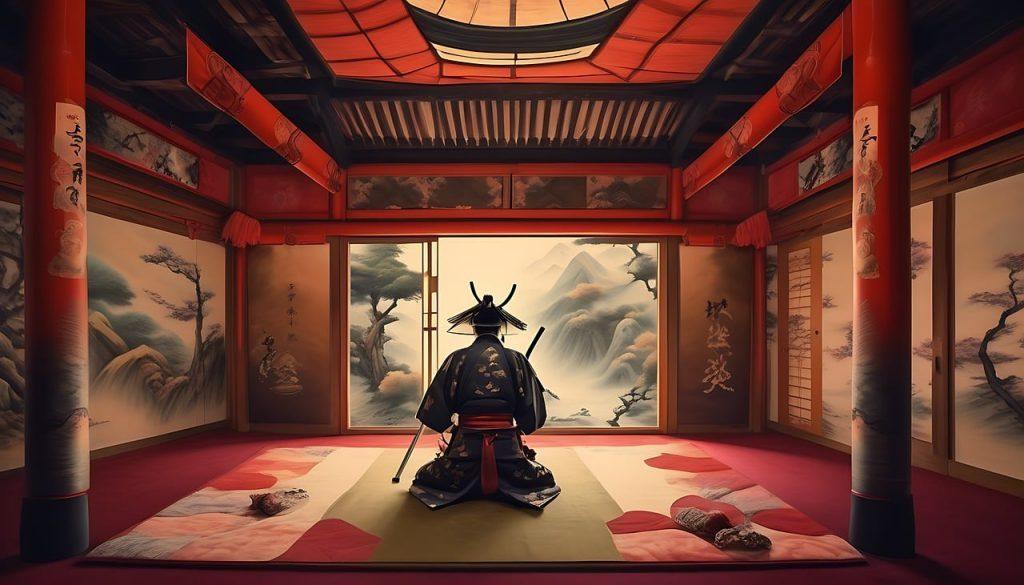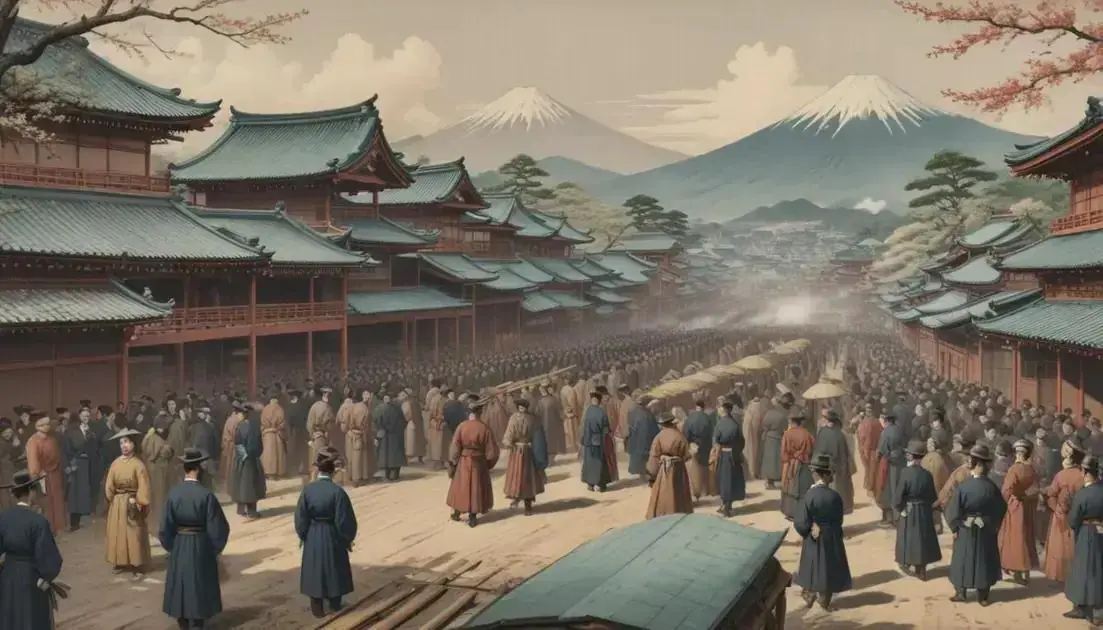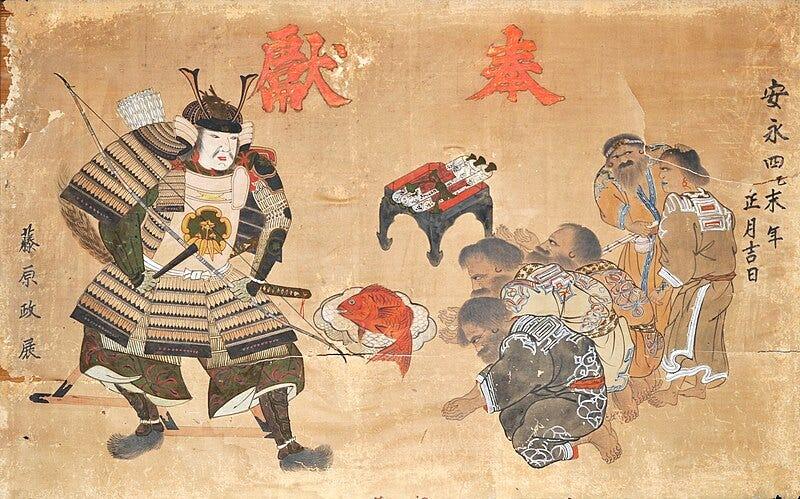
The Role of the Samurai in Shaping Japan’s History and Culture
The samurai, the elite warrior class of feudal Japan, represent a pivotal force in shaping the nation’s history and culture. Their influence extends far beyond the battlefield, leaving an indelible mark on Japanese societal values, artistic expression, and even modern business practices. This exploration delves into the origins, rise, fall, and enduring legacy of the samurai, revealing their multifaceted impact on the Japanese identity.
I. The Genesis of the Samurai: From Warriors to a Ruling Class
The emergence of the samurai is intrinsically linked to the tumultuous period of Japan’s history known as the Heian Period (794-1185). While warriors existed prior, their role was largely localized and lacked the unified structure that would later define the samurai class. The pivotal shift occurred during the Genpei War (1180-1185), a brutal conflict between the Minamoto and Taira clans vying for dominance. The Minamoto’s victory, under the leadership of Minamoto no Yoritomo, marked a profound turning point. Yoritomo established the Kamakura shogunate, a military government that effectively transferred power from the imperial court to a warrior elite. This marked the formal establishment of the samurai as the dominant political force in Japan.
The term “samurai,” derived from “saburai” meaning “to serve,” aptly reflects their initial function as armed retainers to powerful lords. However, their role quickly evolved beyond mere service. Their prowess in warfare, coupled with their loyalty and organizational structure, propelled them to positions of significant political influence, eventually leading to their consolidation as a distinct social class with its own unique code of conduct, known as bushido.
The philosophical underpinnings of the samurai weren’t solely militaristic. While undeniably skilled warriors, they were also deeply influenced by a blend of religious and philosophical traditions:
Buddhism: Provided a framework for understanding mortality, emphasizing impermanence and the acceptance of death as a natural part of life. This influenced the samurai’s acceptance of death in battle and their stoic approach to adversity. Zen Buddhism, in particular, fostered self-discipline, meditation, and mindfulness – qualities essential for both physical and mental preparedness on the battlefield.
Shinto: The indigenous religion of Japan, Shinto emphasized loyalty to one’s lord, respect for nature, and the importance of ancestral spirits (kami). This reinforced the samurai’s strong sense of duty and devotion to their superiors.
Confucianism: Introduced from China, Confucianism provided a framework for social hierarchy and ethical conduct. The emphasis on filial piety, loyalty, and social order strongly resonated with the samurai’s hierarchical society. Confucian principles contributed significantly to the development of the ethical framework of bushido.
This eclectic mix of religious and philosophical ideas shaped the samurai’s worldview, creating a warrior class that was not only physically formidable but also deeply reflective and intellectually engaged. They weren’t just skilled swordsmen; many were also accomplished calligraphers, poets, scholars, and patrons of the arts. This intellectual dimension further elevated their status and influence within Japanese society.
II. The Golden Age of the Samurai: Power, Patronage, and Cultural Flourishing (14th-16th Centuries)
The period spanning from the 14th to 16th centuries represents the zenith of samurai power and influence, often referred to as the Golden Age. This era, however, was far from peaceful. It was marked by continuous warfare, punctuated by periods of intense conflict and political upheaval. The Sengoku period (“Warring States period”) (1467-1615) stands out as a particularly violent and chaotic time, characterized by near-constant battles between powerful feudal lords (daimyo) and their samurai armies.
This constant state of war, ironically, served to refine and elevate the samurai’s martial arts and military strategies. The development of new weaponry, tactical innovations, and the rise of legendary samurai commanders shaped the course of battles and the evolution of warfare in Japan. This was an era of unparalleled military innovation and individual heroism. Names like Takeda Shingen, Uesugi Kenshin, and Oda Nobunaga became synonymous with strategic brilliance and battlefield dominance.
Beyond their military prowess, the samurai of this era were also significant patrons of the arts. The daimyo, controlling vast territories and resources, often supported artists, scholars, and artisans, fostering a rich cultural environment. The creation of magnificent castles, the flourishing of tea ceremonies, the development of distinct schools of martial arts, and the patronage of literary pursuits all bear witness to the cultural flourishing associated with the samurai during this period.
Miyamoto Musashi, perhaps the most famous samurai, epitomizes this era’s blend of exceptional martial skill and philosophical depth. His legendary swordsmanship, combined with his writings on strategy and philosophy (“The Book of Five Rings”), continue to inspire and fascinate people worldwide. Musashi, a ronin (masterless samurai), transcended the confines of traditional samurai service, demonstrating the individual agency and personal ambition that characterized many samurai during this dynamic period.
III. The Decline of the Samurai: From Warriors to Bureaucrats (17th-19th Centuries)
The unification of Japan under the Tokugawa shogunate (1603-1868) brought an end to the Sengoku period’s incessant warfare. While establishing a period of relative peace and stability, this era ironically marked the beginning of the samurai’s decline as a military force. With the absence of large-scale conflicts, the samurai’s primary function as warriors diminished. They gradually transitioned from being primarily fighting men to holding administrative and bureaucratic positions within the shogunate’s complex system of governance.
The Tokugawa period saw the rise of a wealthy merchant class, which challenged the traditional social hierarchy dominated by the samurai. The merchant class accumulated considerable wealth through trade and commerce, while the samurai, bound by the rigid social structures of the time, often found themselves struggling financially. This economic disparity further weakened the samurai’s position within society.
However, the samurai did not simply fade away. They remained an important part of the political and social landscape. They held positions of authority in local administration, acted as tax collectors, and maintained order within their domains. While their martial role diminished, their influence within the social and political framework persisted. Many samurai engaged in intellectual pursuits, becoming scholars, writers, and artists. They continued to uphold the values of bushido, albeit in a less overtly martial context.
IV. The Meiji Restoration and the End of an Era
The Meiji Restoration of 1868 marked the abrupt end of the Tokugawa shogunate and the beginning of Japan’s modernization. The feudal system, including the samurai class, was abolished. The newly formed Meiji government introduced a conscription-based army, open to all classes, effectively rendering the samurai’s military expertise obsolete. The samurai were stripped of their privileges and faced a period of significant social and economic upheaval.
Many samurai, however, adapted to the changing times. Some played crucial roles in the modernization process, embracing new technologies and contributing to the rapid industrialization of Japan. They served as key figures in the government, the military, and burgeoning industries. Their skills in leadership, organization, and discipline, honed during their years of service, proved invaluable in the nation’s transition towards modernity.
V. The Enduring Legacy of the Samurai: A Lasting Influence on Japanese Culture and Beyond
Despite their formal dissolution as a distinct class, the samurai’s legacy remains profoundly influential in shaping Japanese culture and continues to resonate globally. Bushido, the code of the warrior, is not simply a historical artifact; its core values – loyalty, honor, courage, self-discipline, and self-sacrifice – continue to be deeply ingrained in Japanese society. These values are reflected in various aspects of Japanese life, including business ethics, social interactions, and the national character.
The samurai’s impact on Japanese art and literature is undeniable. Their stories, both real and fictional, have been immortalized in countless works of art, literature, film, and television. These narratives have shaped the national imagination, perpetuating the samurai’s image as symbols of strength, honor, and unwavering commitment. Their aesthetic ideals, reflected in the design of swords, armor, and even gardens, continue to inspire artists and designers today.
The samurai’s influence extends beyond Japan’s borders. Their story, often romanticized in Western media, has captured the global imagination. Bushido’s principles of self-discipline and loyalty have influenced various aspects of Western thought, especially in fields like business and leadership. The emphasis on honor, self-improvement, and unwavering commitment resonate with many cultures, transcending geographical and historical contexts.
The samurai, therefore, are more than just historical figures; they are enduring symbols. Their story is one of military prowess, cultural influence, and a compelling narrative of adaptation in the face of profound societal change. Their enduring legacy continues to inform and inspire people around the world, demonstrating the lasting impact of a warrior class that shaped the destiny of a nation. Their influence extends beyond the battlefield, leaving an indelible mark on Japanese culture and offering valuable lessons on leadership, discipline, and the enduring power of values in a constantly evolving world.


